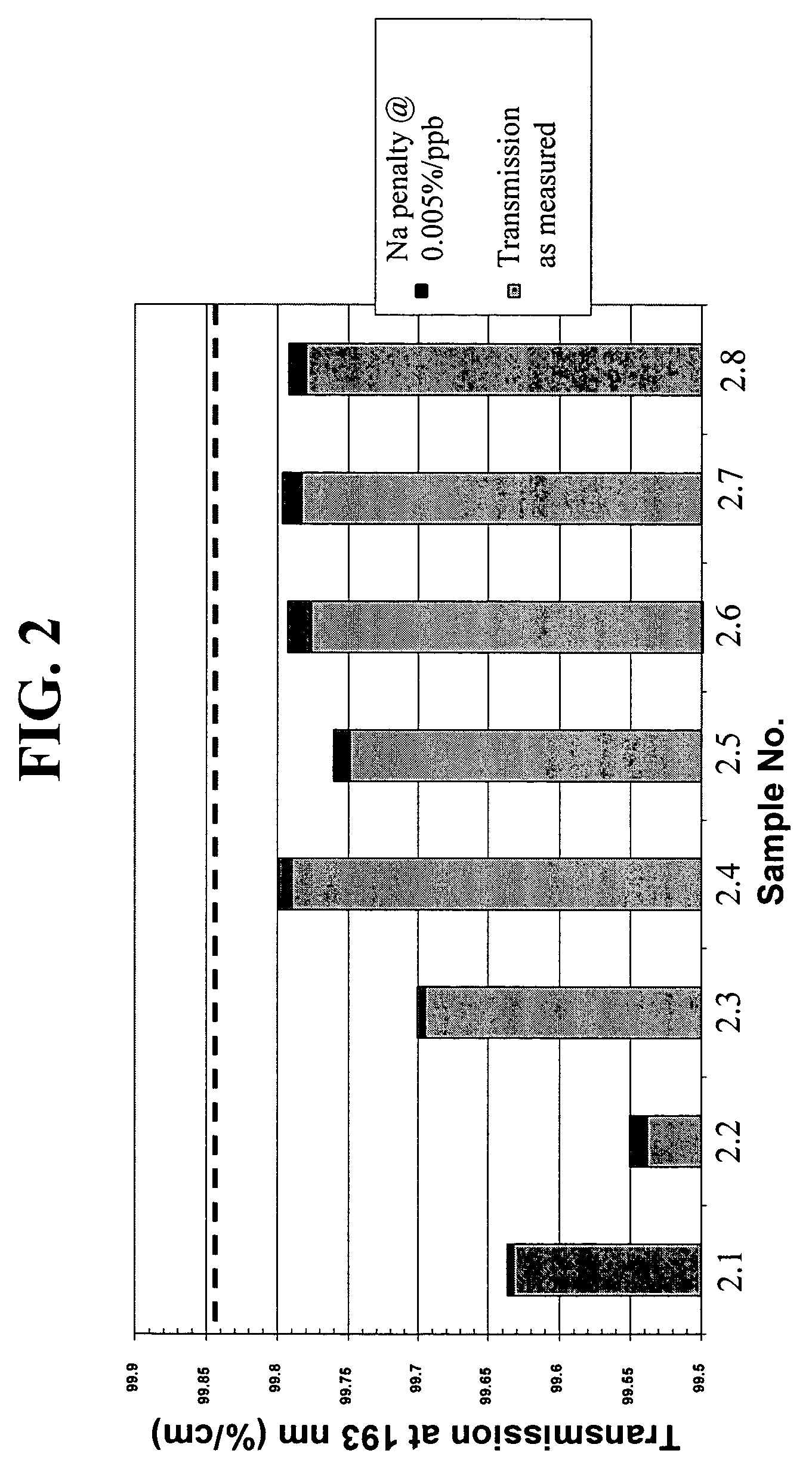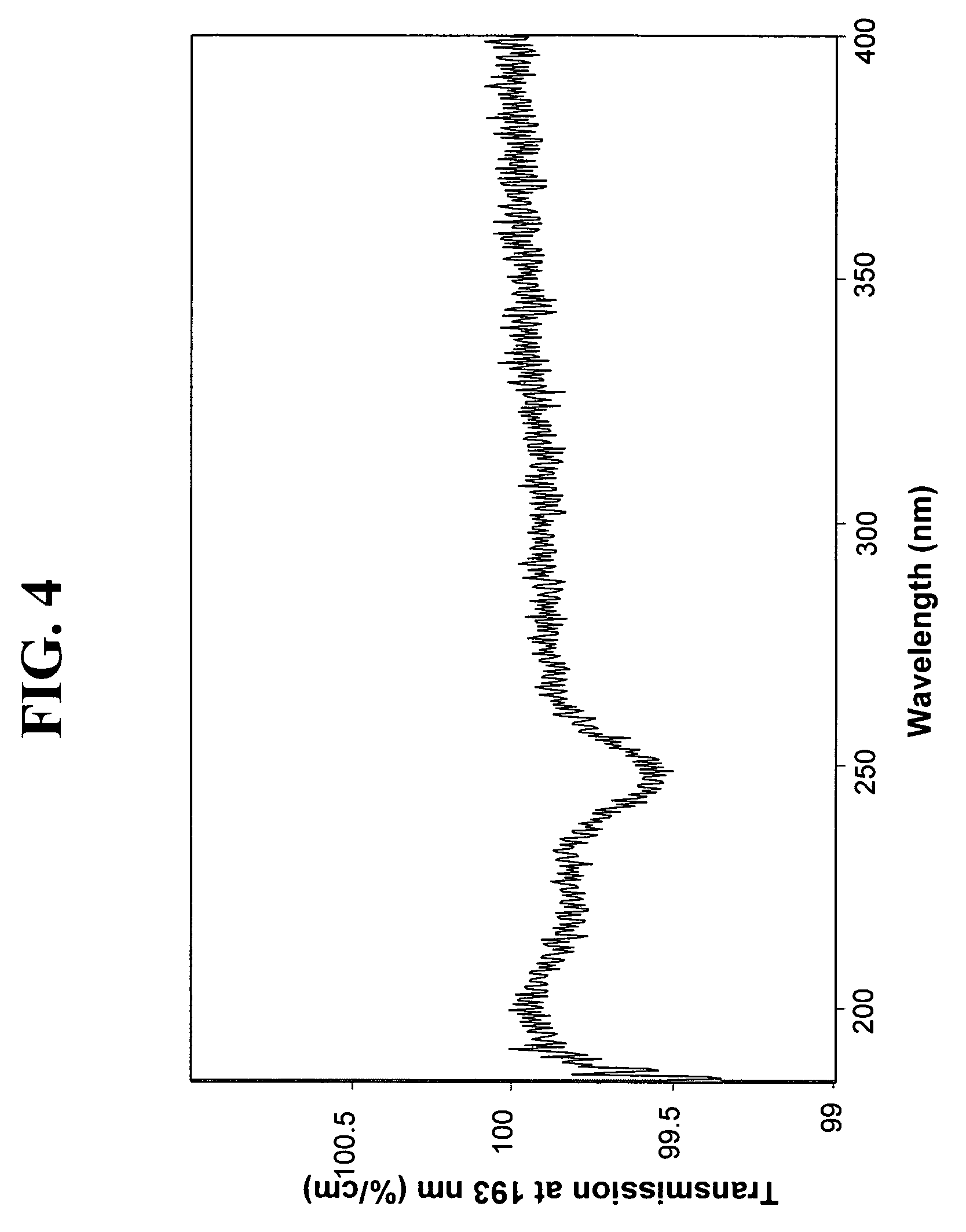High transmission synthetic silica glass and method of making same
a synthetic silica glass and high transmission technology, applied in the field of fused silica material and process of making the same, can solve the problems of performance of fused silica optics, affecting the optical properties of the optical members, and affecting the density, so as to achieve high transmission, high refractive index homogeneity, and large clear aperture area
- Summary
- Abstract
- Description
- Claims
- Application Information
AI Technical Summary
Benefits of technology
Problems solved by technology
Method used
Image
Examples
Embodiment Construction
[0063]As used herein, the term “variation of refractive index,” or “refractive index variation,” or “Δn,” means the maximal variation of refractive indices measured in a plane perpendicular to the optical axis of the glass material or glass optical member along a predetermined direction by using interferometry at about 633 nm (He—Ne laser). As is typically done by one skilled in the art, when discussing refractive index variation along a certain direction, tilt and piston are subtracted. Therefore, the refractive index variation along a certain direction (such as the radial direction in a sample prepared by using the OVD process) in the meaning of the present application does not include tilt or piston. As indicated below, typically, the optical axis of a glass optical member, a glass blank, or a piece of glass material, is selected to be perpendicular to a plane (a cross-section) in which the measured refractive index inhomogeneity is the smallest, in order to obtain a glass member...
PUM
| Property | Measurement | Unit |
|---|---|---|
| density | aaaaa | aaaaa |
| temperature | aaaaa | aaaaa |
| density | aaaaa | aaaaa |
Abstract
Description
Claims
Application Information
 Login to View More
Login to View More - R&D
- Intellectual Property
- Life Sciences
- Materials
- Tech Scout
- Unparalleled Data Quality
- Higher Quality Content
- 60% Fewer Hallucinations
Browse by: Latest US Patents, China's latest patents, Technical Efficacy Thesaurus, Application Domain, Technology Topic, Popular Technical Reports.
© 2025 PatSnap. All rights reserved.Legal|Privacy policy|Modern Slavery Act Transparency Statement|Sitemap|About US| Contact US: help@patsnap.com



